
Yesterday afternoon, the Reserve Bank of Australia (RBA) released their preliminary index of commodity prices for the month of January. According to the release:
Preliminary estimates for January indicate that the index rose by 0.2 per cent (on a monthly average basis) in SDR terms, after falling by 1.3 per cent in December [revised down from -1.0 per cent]. The largest contributors to the rise in January were increases in the prices of gold and oil, while the prices of base metals and most rural commodities also increased. The estimated export price of coking coal continued to decline in the month, reflecting a further decline in spot and contract prices. In Australian dollar terms, the index fell 3.0 per cent in January.
Over the past year, the index has risen by 6 per cent in SDR terms. Much of this rise has been due to the earlier increases in the prices of coal, gold and oil. The index has risen by 1 per cent in Australian dollar terms over the past year…
Below are some charts illustrating the state-of-play. Data is shown in both Australian Dollar terms and Special Drawing Rights (SDR) terms, which is calculated by the International Monetary Fund and based on a weighted basket of four currencies – US dollar, euro, Japanese yen, and pound.
First, the index level and 6-monthly moving average percentage change of all commodities, both rural and non-rural:
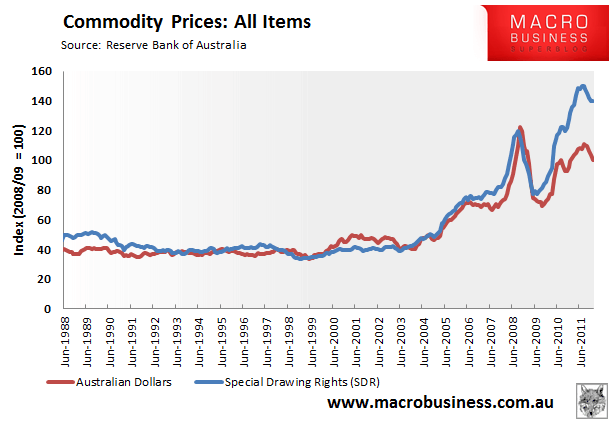
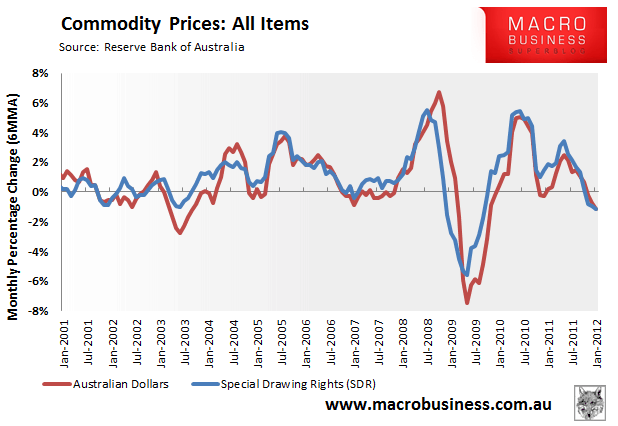
As you can see, and as H&H predicted last year, overall commodity prices are now falling – down 7% since August 2011 – but remain at highly elevated levels.
Now consider the breakdown by component. First, rural commodities:
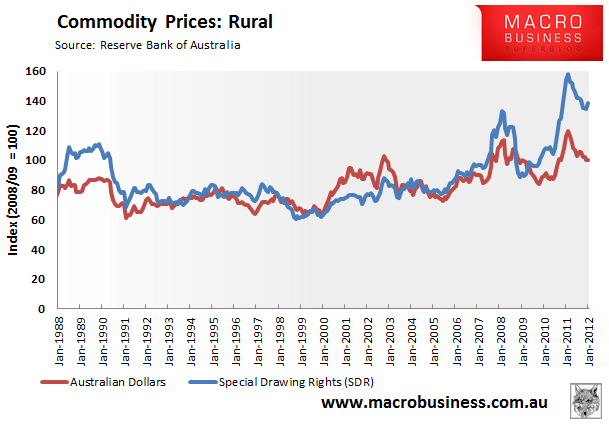
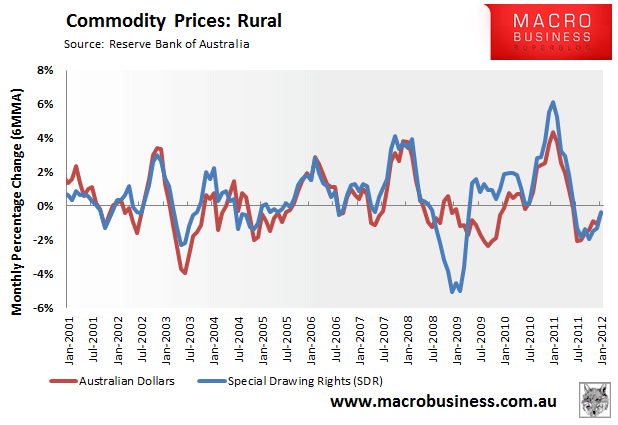
It’s a similar story, with rural commodity prices also elevated. However, they are 12% below their peak level, despite recovering 3% in January.
Rural commodity prices also never rose as strongly as non-rural commodities (think iron ore and coal), as shown by the below charts:
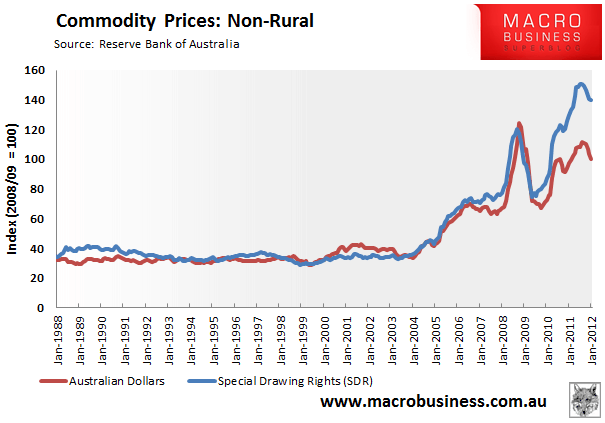
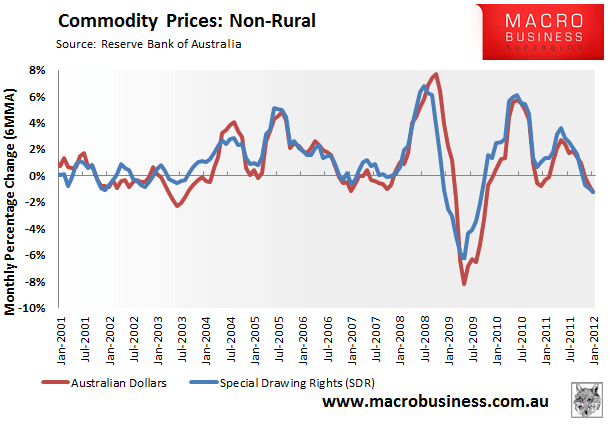
Non-rural commodities dominate the RBA’s commodity index. As such, its movement tends to mirror the overall index, as is the case above. Like the broader index, non-rural commodities are 7% below their peak level reached in August 2011.
Finally, precious metals – a sub-set of non-rural commodities – have been falling quite sharply but managed to recover 7% in January on the back of higher gold prices. Yet they still remain 17% below their most recent peak in February 2011:
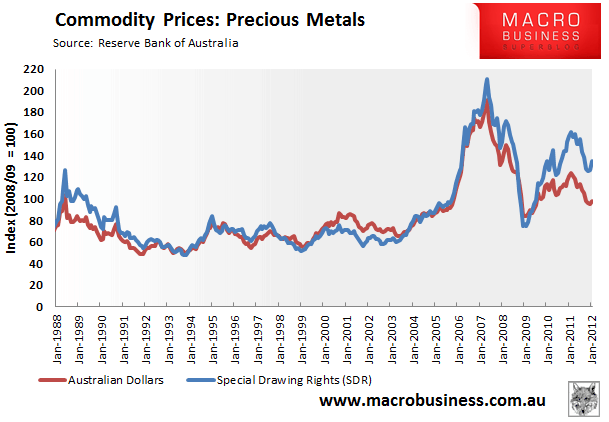
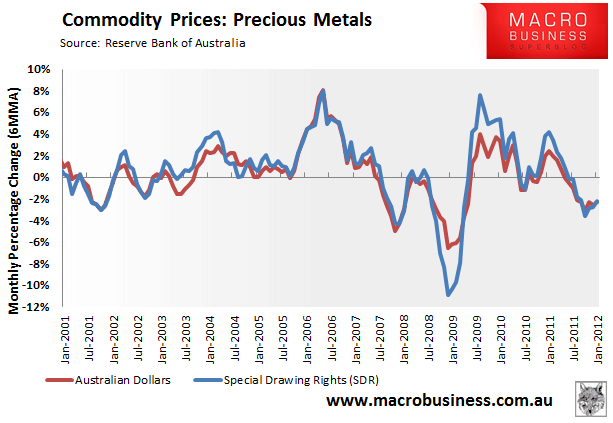
The ABS trade data for December, scheduled for release later today, will provide more colour on the performance of Australia’s key commodity exports – iron ore and coal. The trade surplus is set to shrink.

